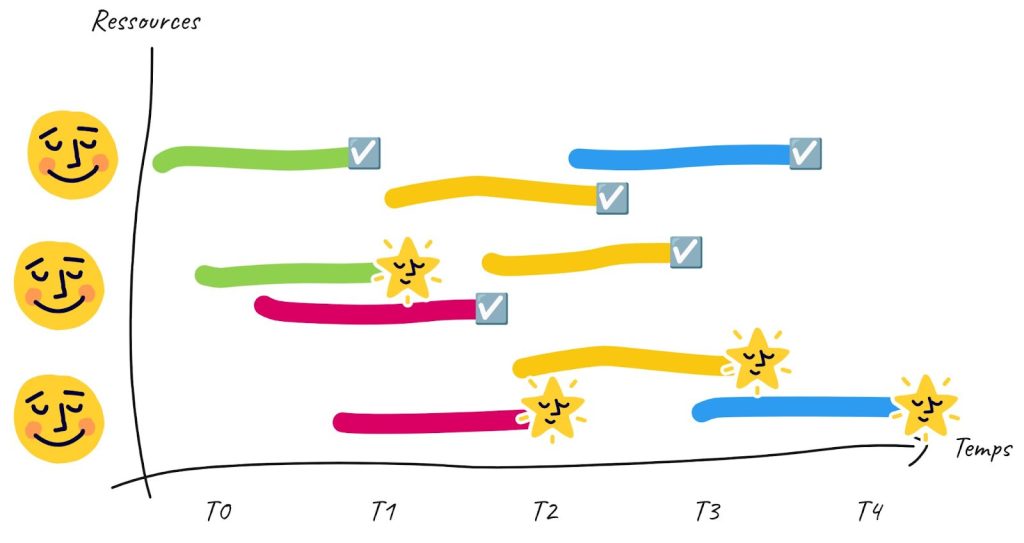April 19, 2022
Vincent Dessureault, performance and technology consultant at NSI Solution, explains how to use Little’s Law in your project management.
Manage your projects with less effort
Are you in charge of a host of projects to deliver and see great earning potential for your organization?
However, you may have the impression that the projects are piling up, but the payoffs don’t seem to follow at the same speed.
You realize pretty quickly that the more projects your project team manages simultaneously, the longer it takes to deliver them.
You also notice that quality tends not to follow quantity.
So is there a way to increase your profits, by delivering more projects, while preserving the same quality, without burning your resources, and without increasing the time to complete each project?
This is what Little’s Law allows us to understand in a project management context.
Little’s Law
Without wanting to make too many shortcuts, Professor John Little proposed a formula to explain the relationship between work-in-progress (“WIP”), production lead time (“Lead Time”) and production throughput (“Throughput”).

Thus, as the average number of projects in progress increases, the average delivery time for each project increases.

This formula reveals that the delivery time depends on the work in progress and the production rate.
Manage your projects with less effort
Now let’s see how we can reach our solution by applying Little’s law.
Let’s say you want to deliver 4 projects (Green, Yellow, Blue and Red).

So you start by trying to deliver your 4 projects at the same time. So your work in progress (WIP) is 4 projects.
You see that it takes you 4 months to deliver all 4 projects. So your Lead Time is 4 months.
So your Throughput is 4 projects / 4 months = 1 project per month.
One project per month is good! But your clients are complaining because it took you 4 months to deliver each of their projects.
So you decide to apply Little’s Law, to see if you can do better.
You then reduce your work in progress (WIP). Instead of doing all 4 projects at the same time, you decide to do them one after the other. This way your work in progress (WIP) is limited to 1 project.
You keep the same resources and the same project methodology, so you know that your Throughput remains the same; 1 project per month.
So your Lead Time is now 1 project / 1 project per month = 1 month.

In other words, what this means is:
- You deliver your 4 projects in less than 4 months
- You have delivered their project to your clients in 1 month each
- You have collected as much profit over this 4 month period
- You have received profits from the 1st month
Moreover, what Little’s Law doesn’t say is that when your resources have fewer different projects to manage at the same time, they make fewer mistakes and lose less time due to changes. So in reality, you’ll gain even more by reducing your work in progress!

Want to learn more about good project management practices? Contact us now!

Discover the Zoho apps


